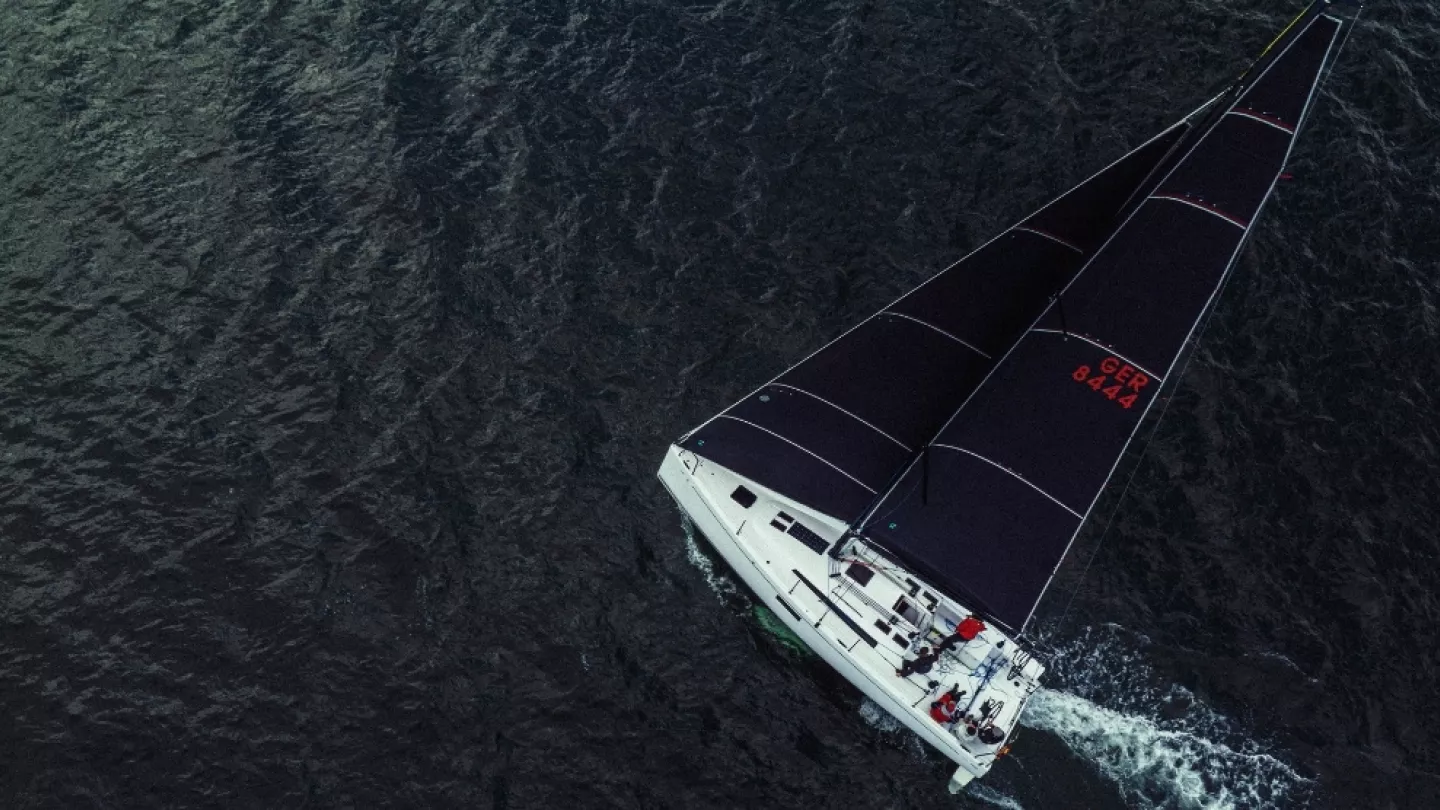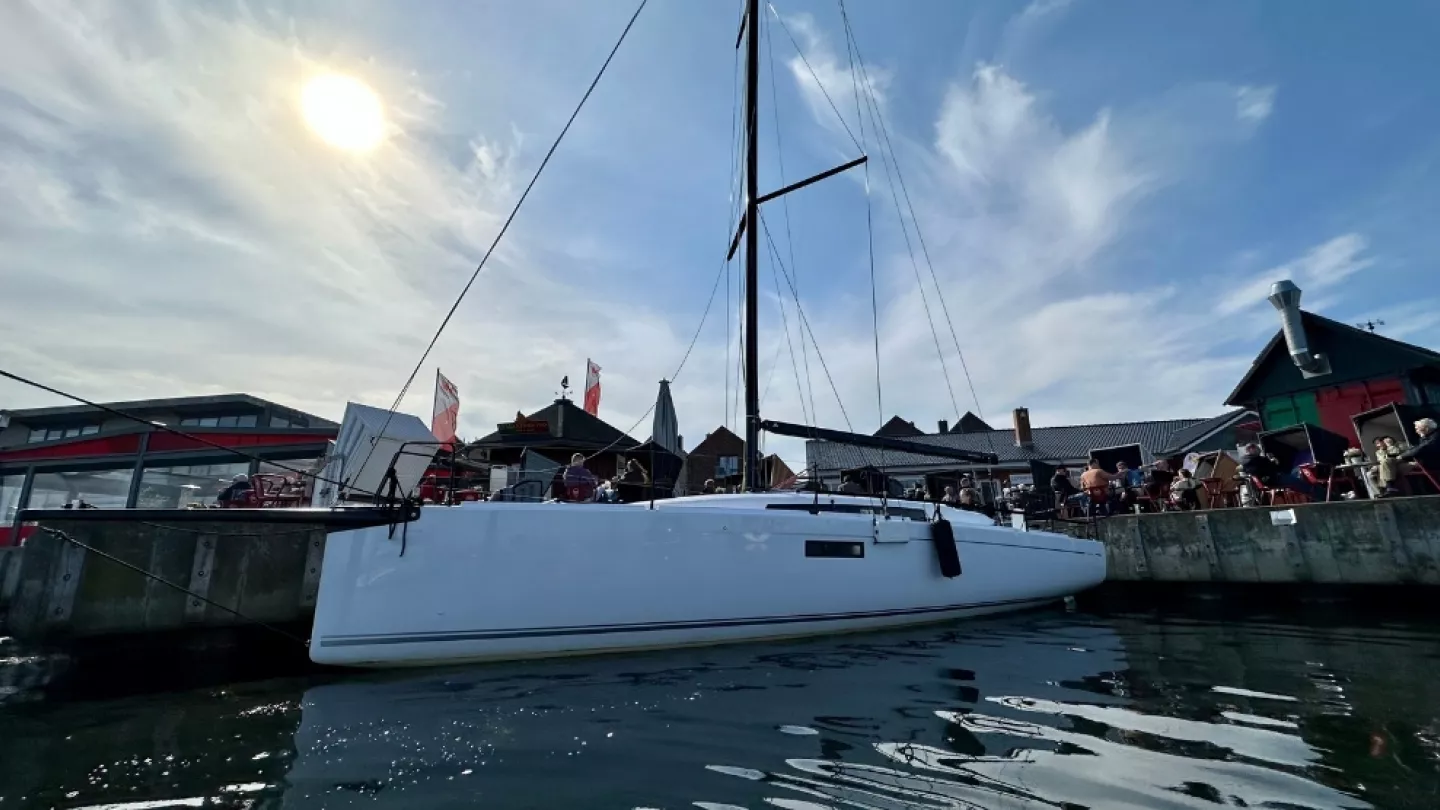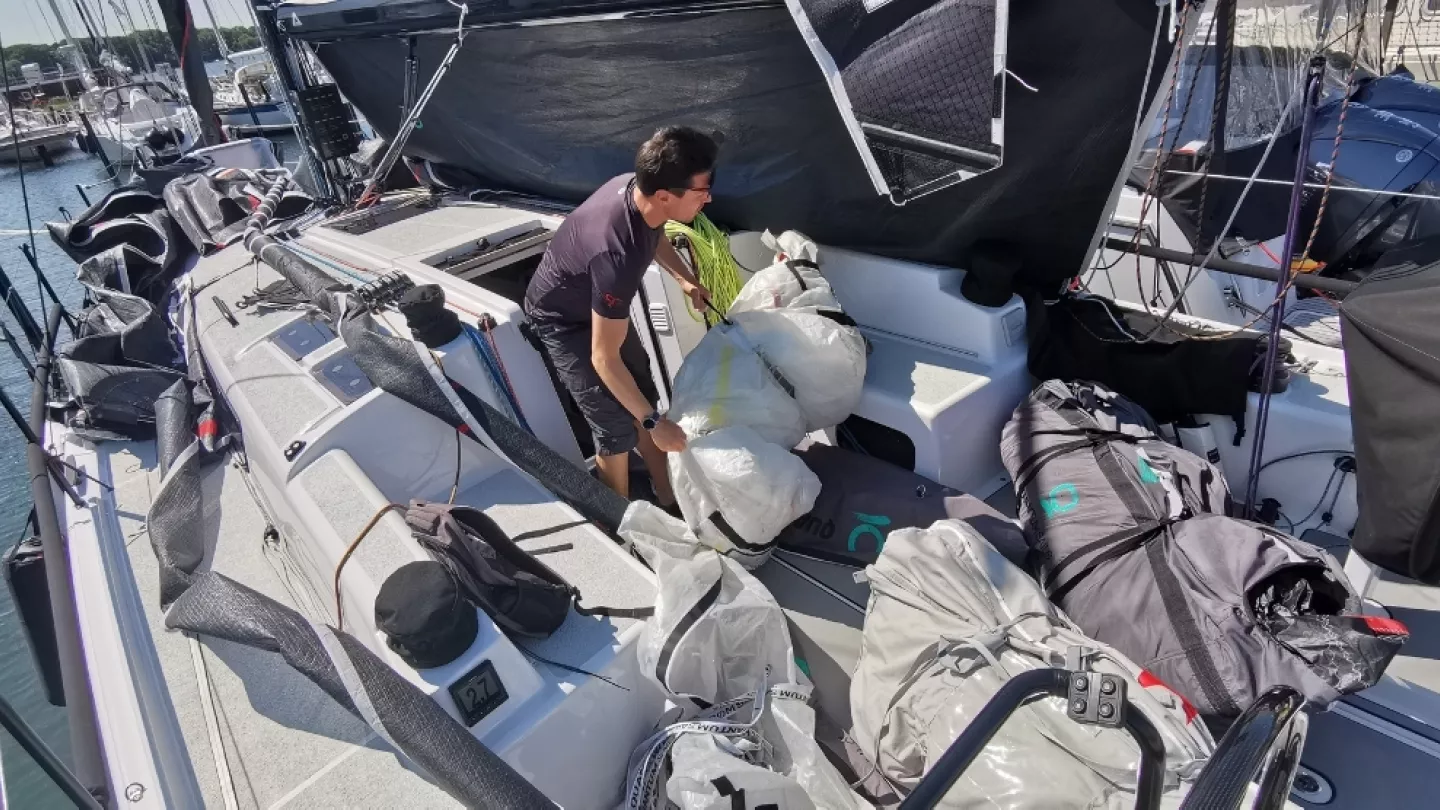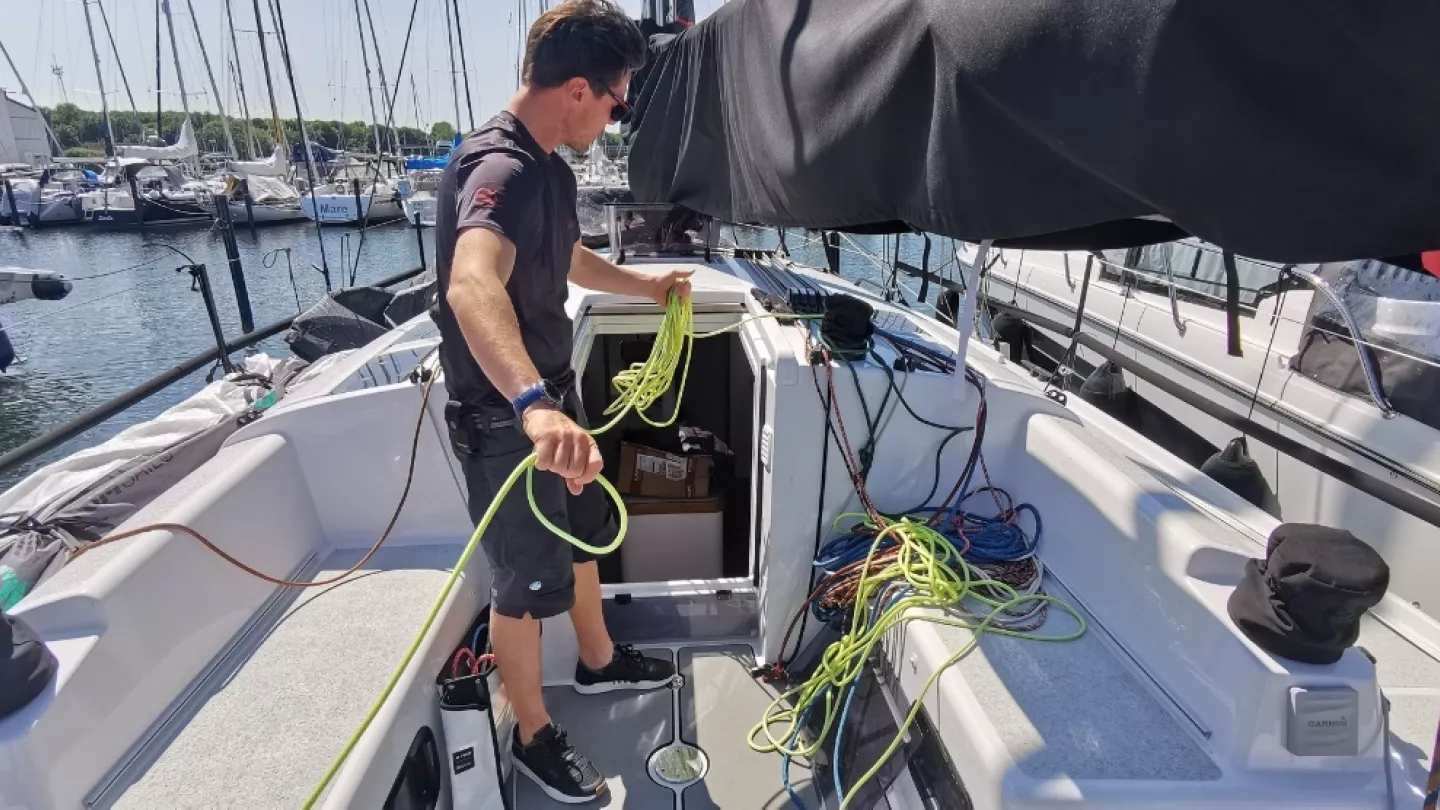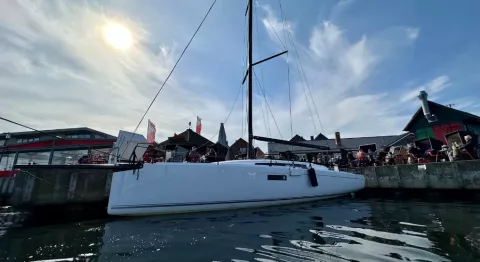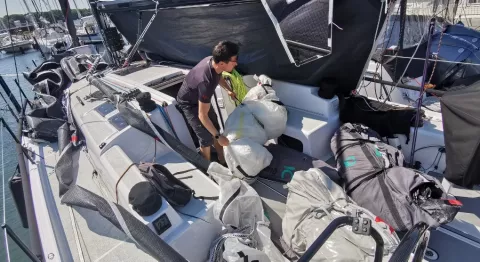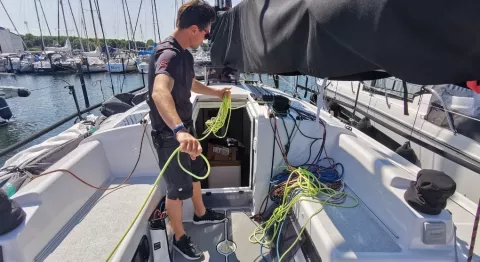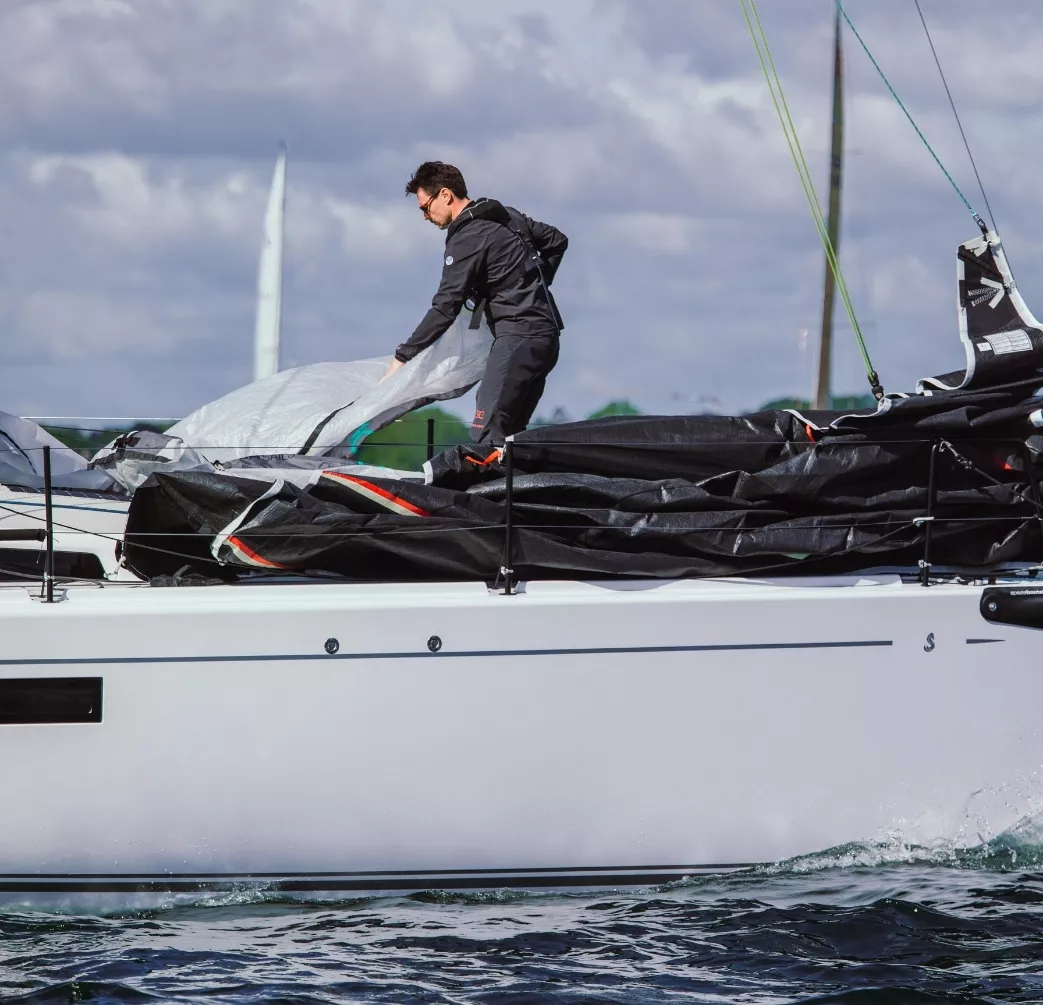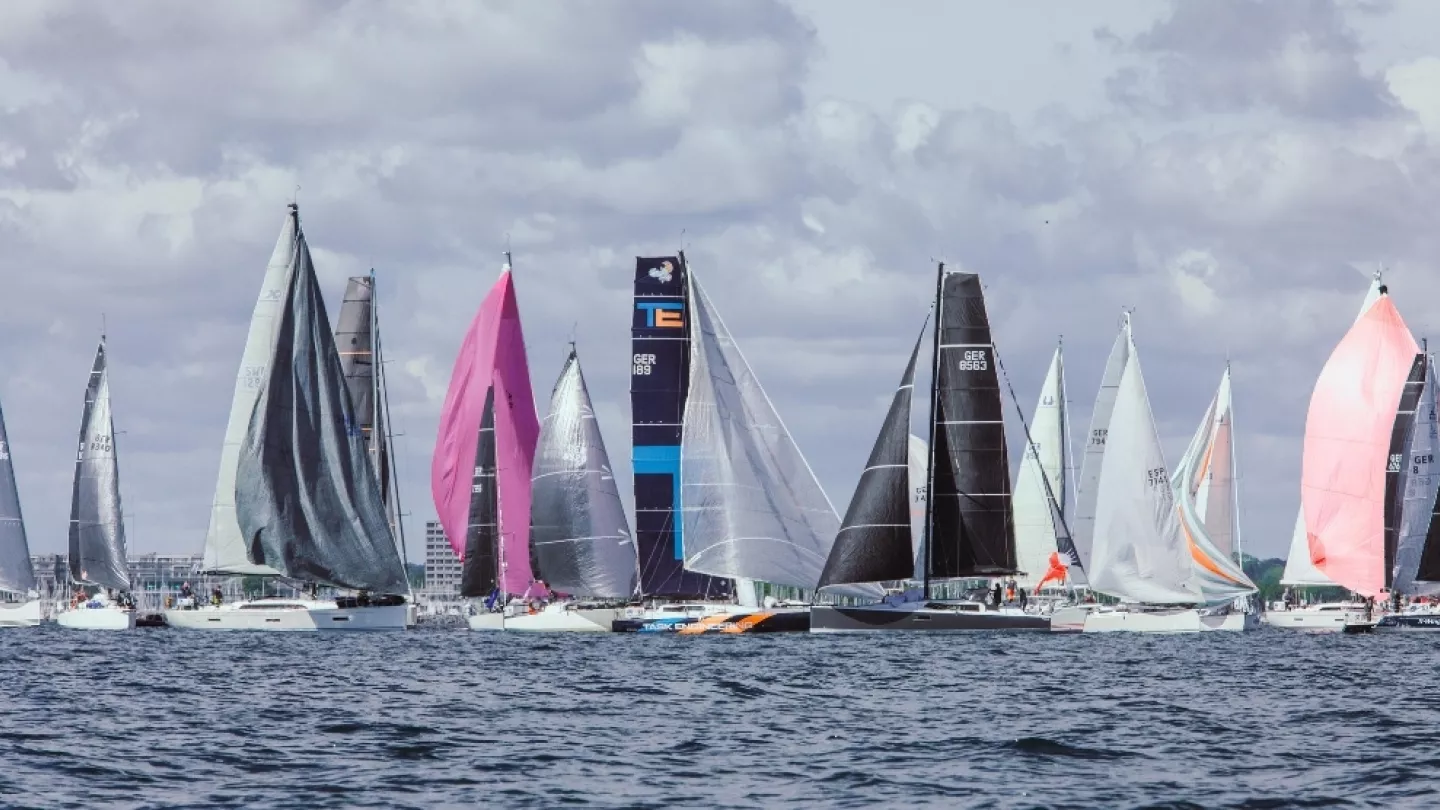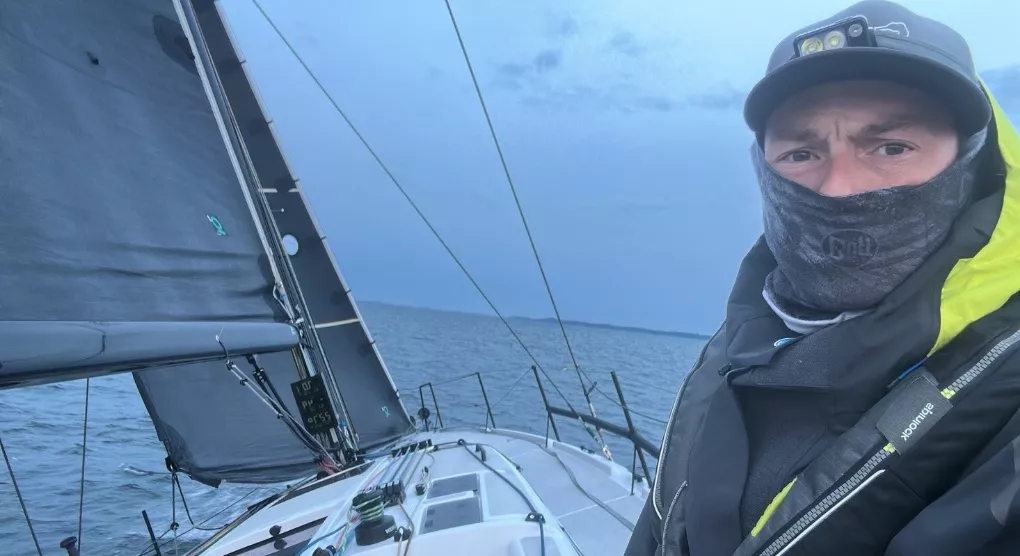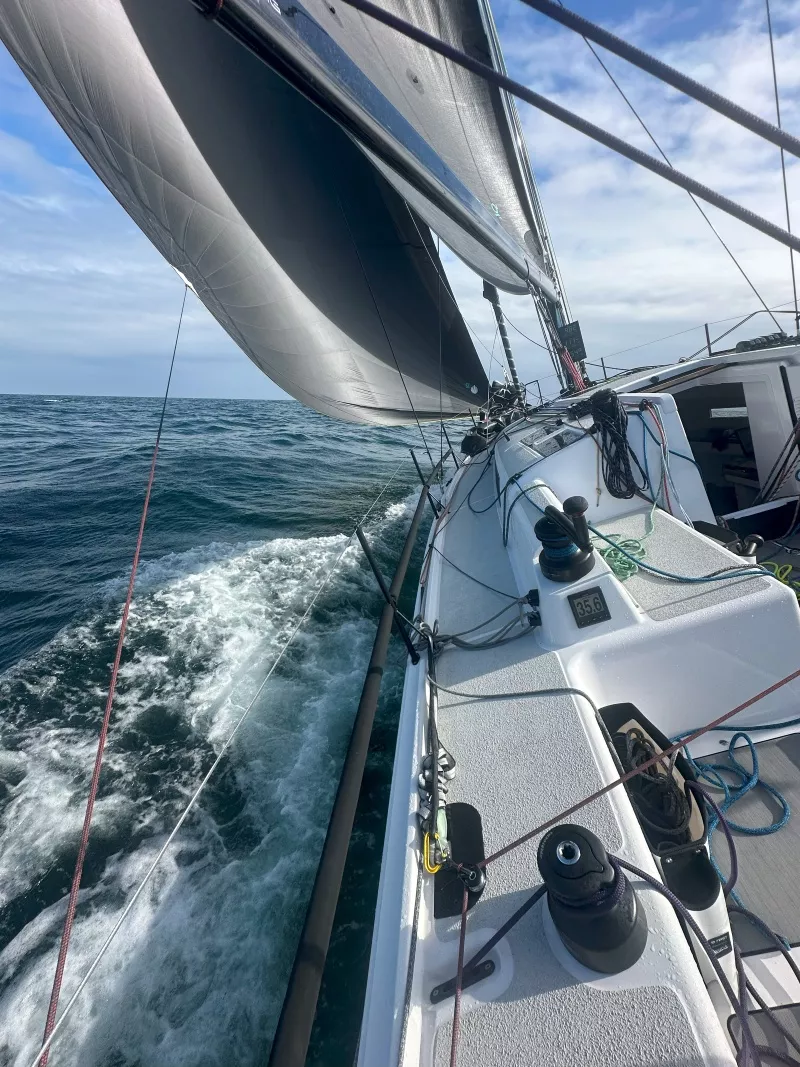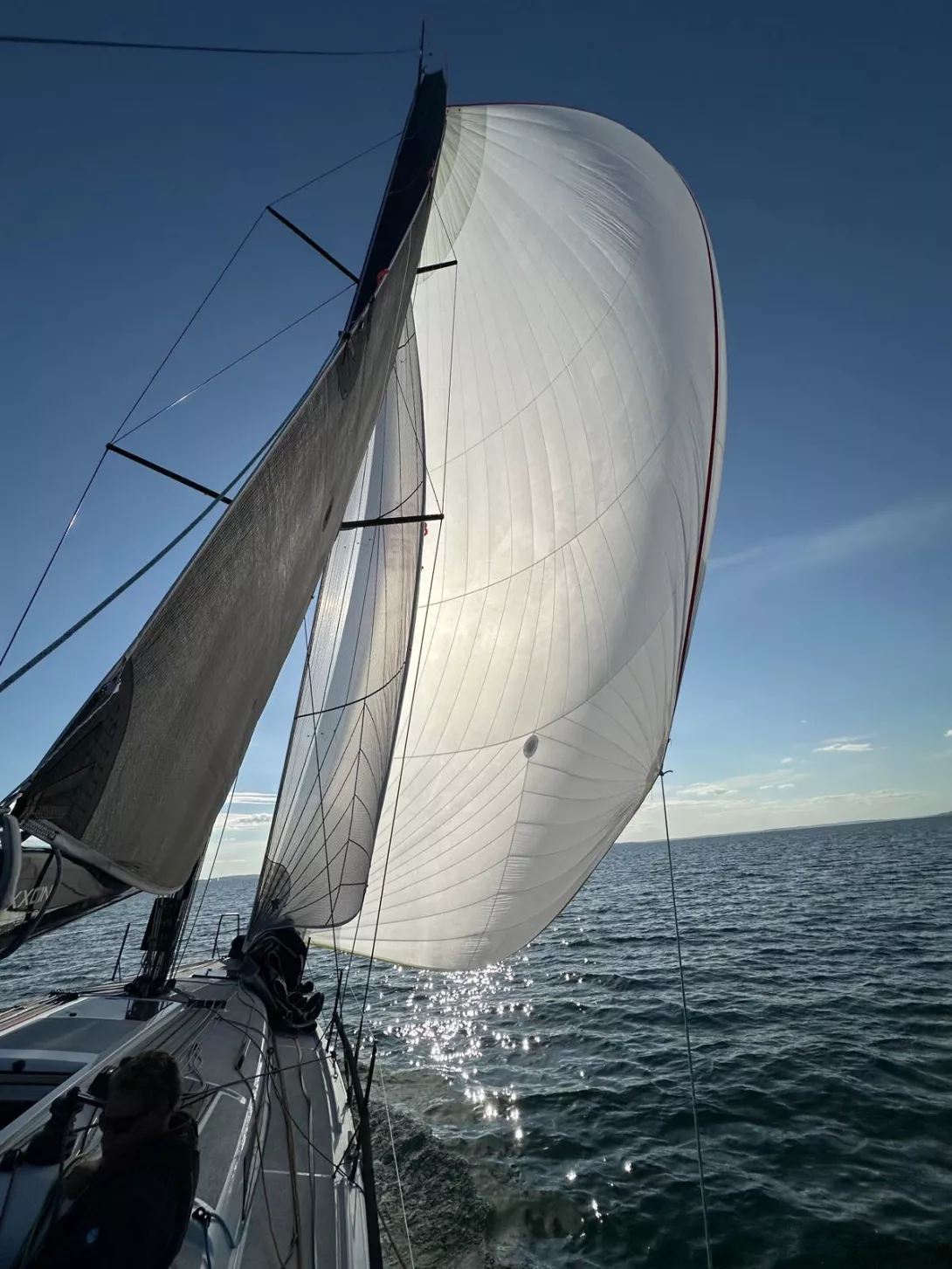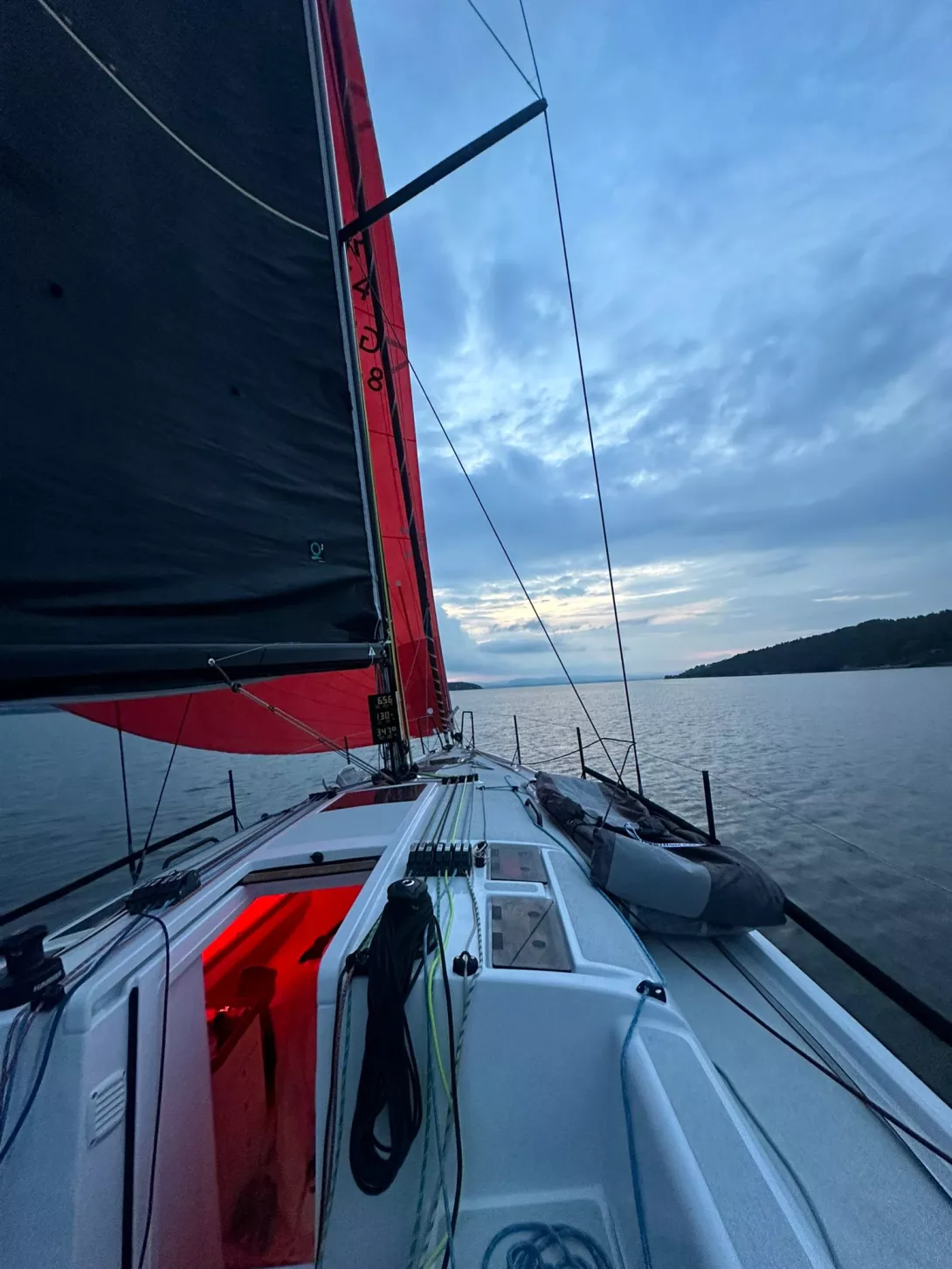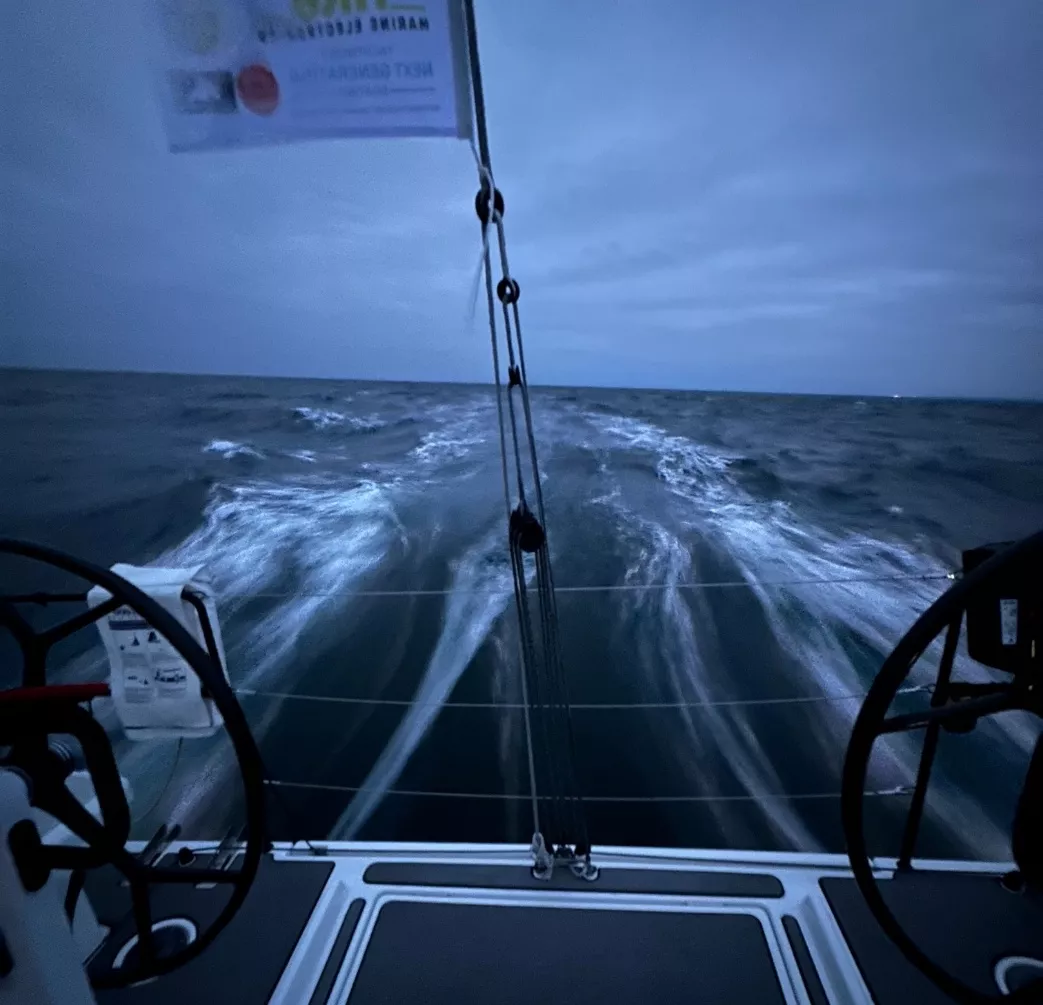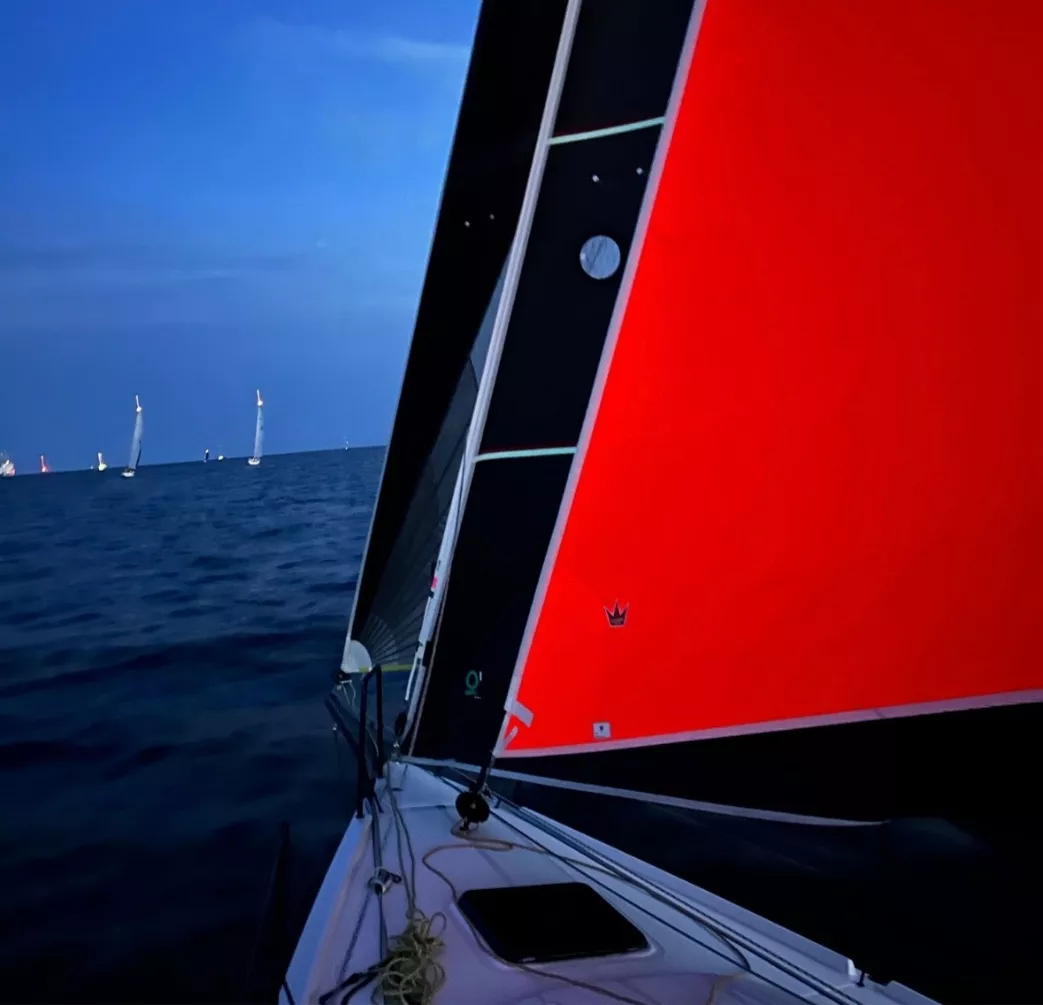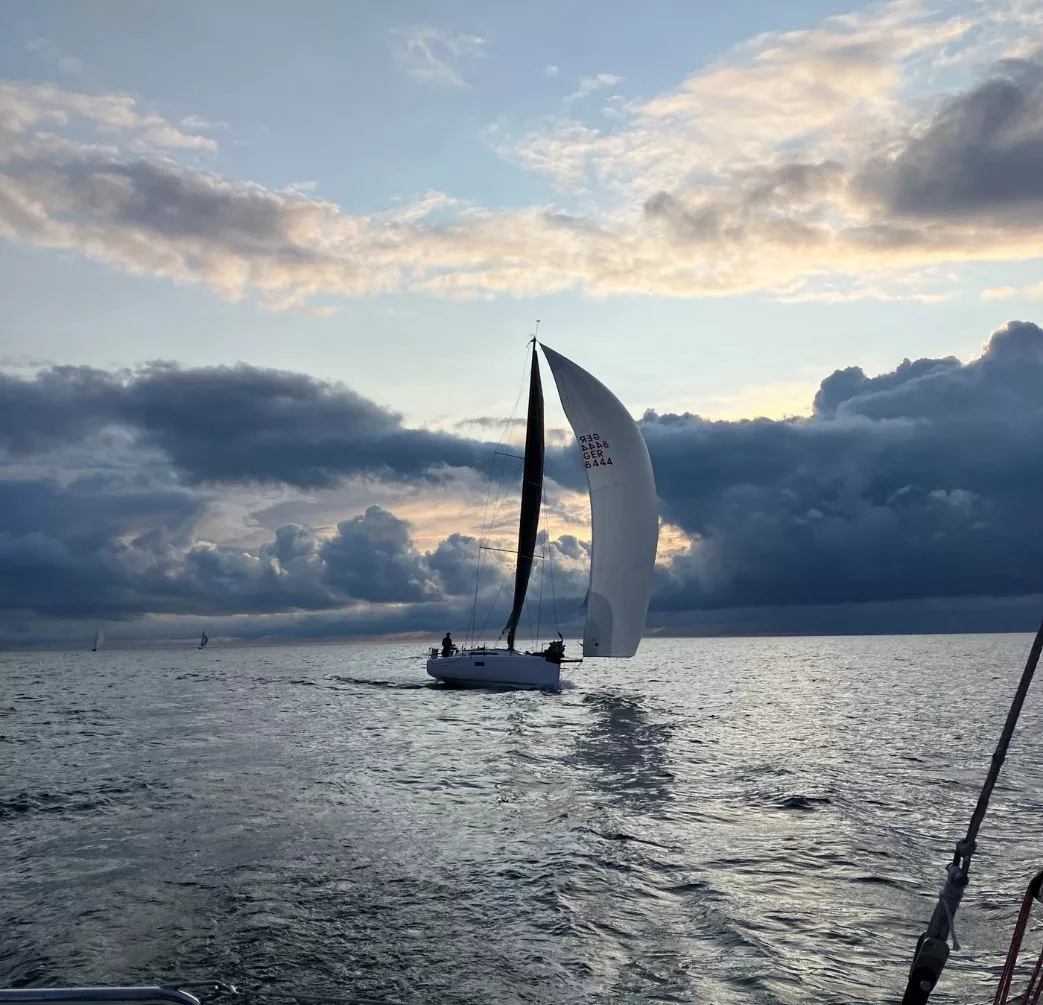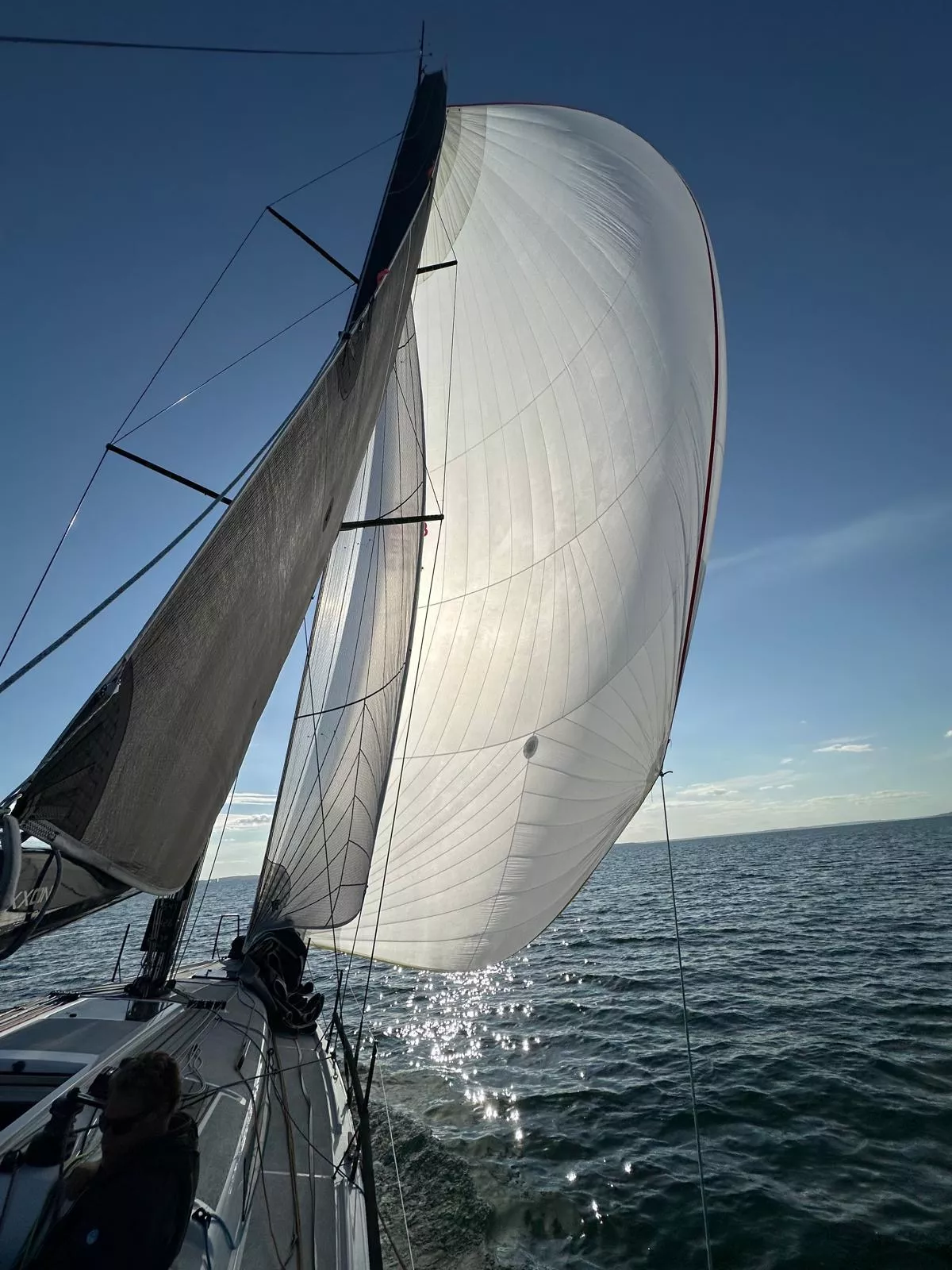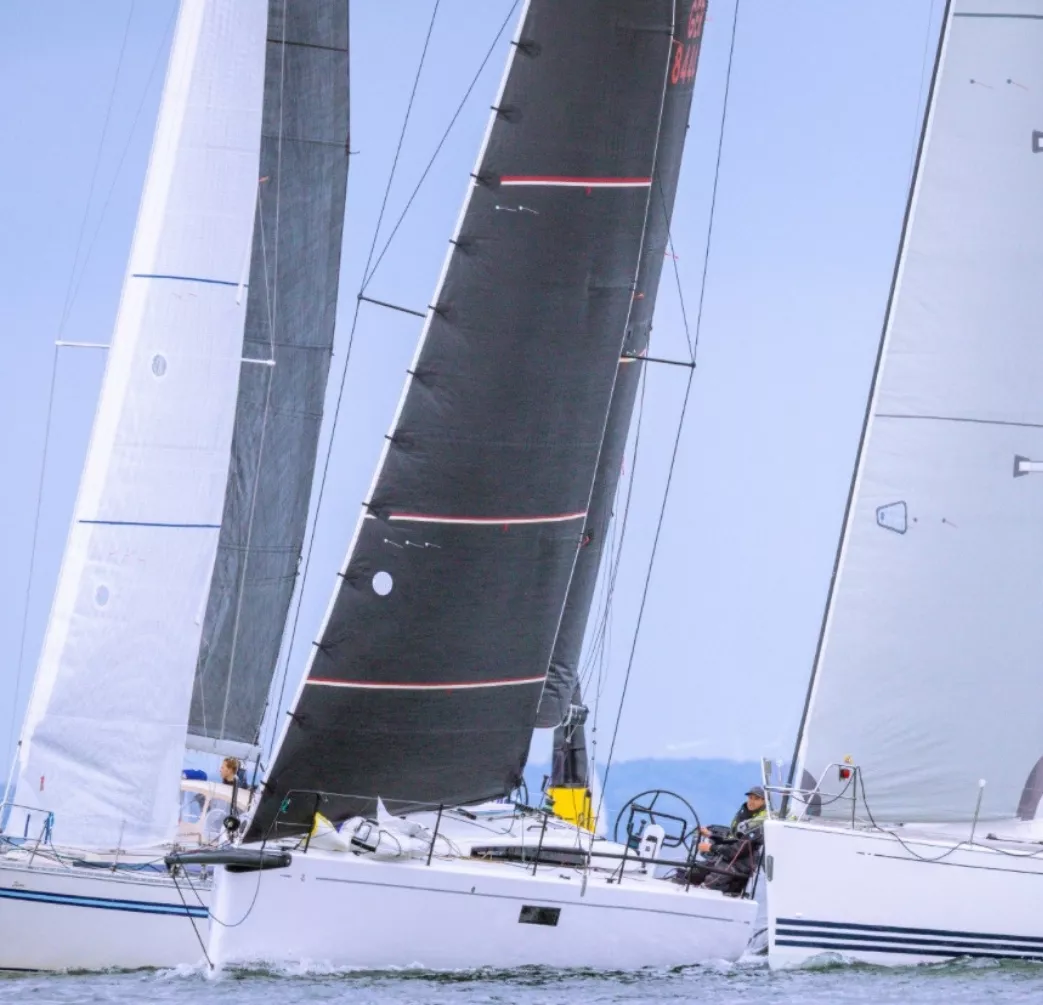How do you win a race like the Baltic 500?
Arno approaches sailing like a pro. On the nav table of the FIRST 36 sits a Toughbook connected to load sensors at various critical points of the yacht. Real-time weather updates are pulled from the web, weather routing and race software run continuously. Asked how to win a race like this, Arno says:
"We had a clear game plan, which we kept adjusting to match the latest wind and weather forecasts. At the start, it was clear there’d be a nasty patch of calm at the end—so the strategy was to get as far ahead as possible early on.”
The leg to Læsø and back was set. “Relatively streamlined and straight,” Arno says, “and with good wind.” The challenge came earlier, in the Great Belt. “Since there wasn’t much wind expected there, the key factor became the current. That was the turning point and the big question: Where’s the wind? But more importantly—where’s there less current?” So, the brave took the route closer to shore, where the current was weaker. Constantly watching the depth sounder, always on the edge of grounding: “It’s like a thriller! The sounder data always lags behind a bit, so sailing close to depth lines was seriously risky.
In the Belt, we must have done more than 25 or 30 jibes on one stretch—getting close to the depth line, then away. And that really pays off! Near shore, there was up to one knot less countercurrent. Over time, that adds up to serious gains.” And it’s exhausting.
At night, the stress level multiplies. “We were making good progress with our big kite (A2), but the wind kept building. At that point, risk management becomes crucial: How far do we want to push it, and what are the potential consequences for the rest of the race?” Arno explains. “If you lose your biggest kite during a stormy night and then face a dead calm at the end with no gennaker… game over. So, in the middle of the night, we switched to the A4 and kept blasting through the Danish island world."

